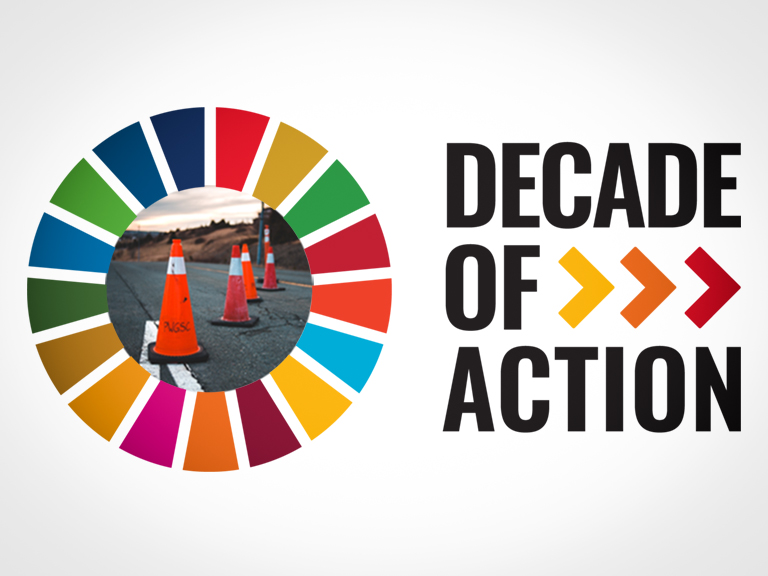In India, there were 4, 67,000 road accidents in the year 2018 or 34.9 accidents per lac population or 18.4 road accidents per 10,000 vehicles, according to Ministry of Road Transport and Highways statistics. Although this a little less than the peak of 501,000 in 2015, still these falls short of the country’s target to reduce Road accidents by 50% by 2020 as envisaged by being a signatory to UN Decade of Action for Road Safety (2011-2020).
In this context, it may be noted that The First Global Ministerial Conference on Road safety was held on 19-20 November 2009 by the Government of the Russian Federation The meeting culminated with the adoption of the Moscow Declaration which invited the UN General Assembly to declare a Decade of Action for Road Safety 2011-2020.
The second Global High-Level Conference on Road Safety was held on 18-19 November, 2015 in Brasilia, Brazil wherein 2200 delegates including from India signed the ‘Brasilia Declaration on Road Safety’ whereby they agreed to halve road traffic deaths by the end of this decade (2020) through various methods discussed. This is also a key milestone for Sustainable Development Goal (SDG) target 3.6 of World Health Organization (WHO).
The 3rd Global Ministerial Conference on Road Safety “Achieving Global Goals 2030” took place on 19–20 February 2020 in Stockholm, Sweden. It has now been decided to defer the goal of reducing road accidents deaths by 2030.
The WHO’s Global status report on road safety, 2018 has also highlighted that annual road traffic accident deaths have reached 1.35million. Road traffic is the leading killer for people aged 5-29 years and pedestrians, cyclist and motorcyclists. It has been noted that problem is more acute in developing countries as compared to developed countries. Road accidents are known to be responsible for the loss of 3% of world’s GDP every year.
In the light of above, let’s look at various developments made in India, in the last decade in order to improve Road Safety in India.
The story began by a PIL filed by Dr. S. Rajaseekaran Vs Union of India & Ors (Writ Petition (Civil) N0. 295 of 2012). Dr. Rajaseekaran, an orthopedic surgeon has inter alia prayed for enforcement of Road Safety norms and appropriate treatment of accident victims.
On 22th April 2014, Hon. Justice Madan B. Lokur constituted a Committee on Road Safety under Justice K. S. Radhakrishnan, a former Judge. Mr Gaurav Agarwal, advocate was appointed as Amicus Curie. The Committee on Road Safety has since submitted 12 Reports. Based on 25 recommendations of the Amicus Curie, a bench of Hon. Justices Madan.B.Lokur and Deepak Gupta delivered the judgement dated 30th November 2017 emphasizing the importance of Emergency Medical treatment of accident victims.
In the said judgement, Supreme Court has also issued directions on Road Safety such as Formulations on Road Safety Policy and Road Safety Cells by 31st January, 2018 and Road Safety Fund and Action Plan by 31st March, 2018.
Supreme Court also approved Good Samaritan Guidelines, which have now been made part of Motor vehicle (Amendment) Act, 2019 whereby a bystander can leave immediately after taking the injured to the nearest hospital. His statement is voluntary and can be even recorded by video conference.
Motor Vehicle (Amendment) Act, 2019 which came into effect since 1st September, 2019 includes number of provisions for the safety of the road users. It has increased manifold the punishment for non-observance of road traffic rules. They have issued guidelines for ‘Golden Hour’ the hour immediately after the accident, that is crucial for saving the lives of the accident victims. The new amendment allows the central government to order for recall of defected motor vehicles which may harm the environment, or the driver, or other road users. It also provides for the constitution of a Road Safety Board to advise central and state governments on aspects of road safety and traffic management. There are provisions of stringent penalty for motor vehicle manufacturers who fail to comply with prescribed motor vehicle standards, also if a contractor fails to comply with road design standards.
Other efforts being made are such as emphasis on improved Signages, traffic cameras, BS VI guidelines for vehicles. The Bharat New Vehicle Safety Assessment Programme (BNVSAP), on lines of New Car Assessment Programme (NCAP)of other countries, has made Indian made cars at par with developed country standards. Presently, Government of India is also working on a scheme for scrapping of old commercial vehicles which is a major traffic hazard. Health Ministry is setting up Trauma centres, along the highways, across the country, in order to reduce the time taken for providing medical relief to accident victims. Steps are also being taken to provide immediate Medical aid to the road- accident victims by trained ambulance staff. A 10-member task force is being constituted to work out the modalities of funding the treatment of motor accident victims immediately following an accident on the national highway.
Some of these measures such as high penalty for violation of traffic rules, use of cameras to challan violators, improving the functioning of RTOs issuing driving licence, improving the condition of highways, etc. are slowly bringing results. However, the road to total safety is hard and arduous and we still have a long way to go. Public participation and commitment to safety are very important. Every stakeholder, from the vehicle owners to truck drivers to pedestrians- all need to make every effort to drive and behave responsibly in order for India to improve its road accident outcomes.



Good article – this is a very important topic as driving is perhaps the biggest hazard in the society!
Perhaps it may be worthwhile trending the accident data over time (say from 2000 to 2020), normalized to per thousand vehicles, and / or number of people, and / or miles driven. That will reveal if we are improving or worsening and the rate of change.
There are a lot of improvements in driving safety – with scientific understanding of the circadian rhythm which is low in the early hours of the morning and post lunch. With this awareness, distance driving – which involves speed and therefore more severe consequences – must be avoided at these times.
A fascinating topic, I’d be happy to share more thoughts!
Thank you for your insightful comments. Will take them up in the follow up article.